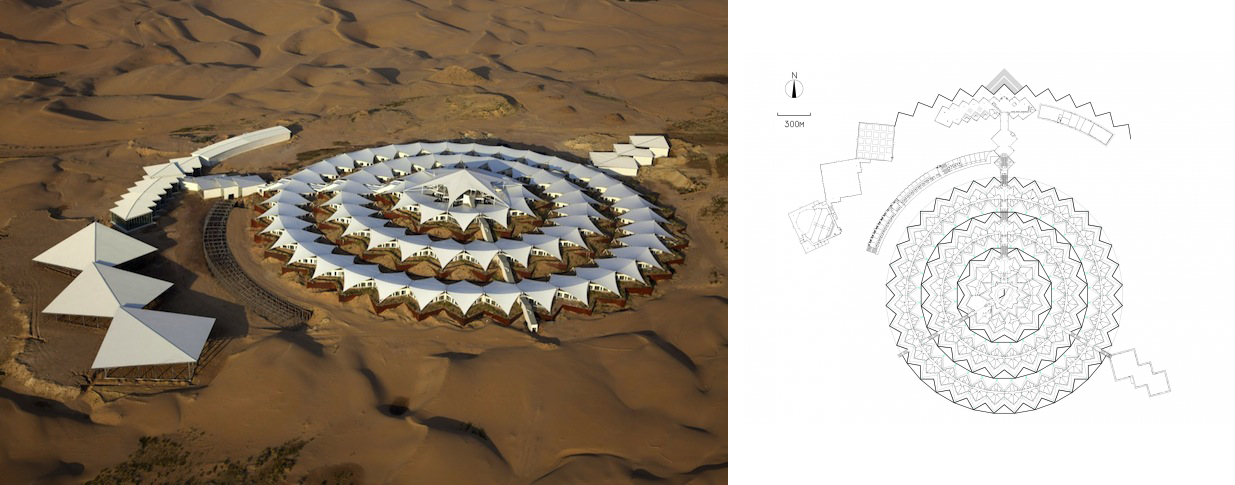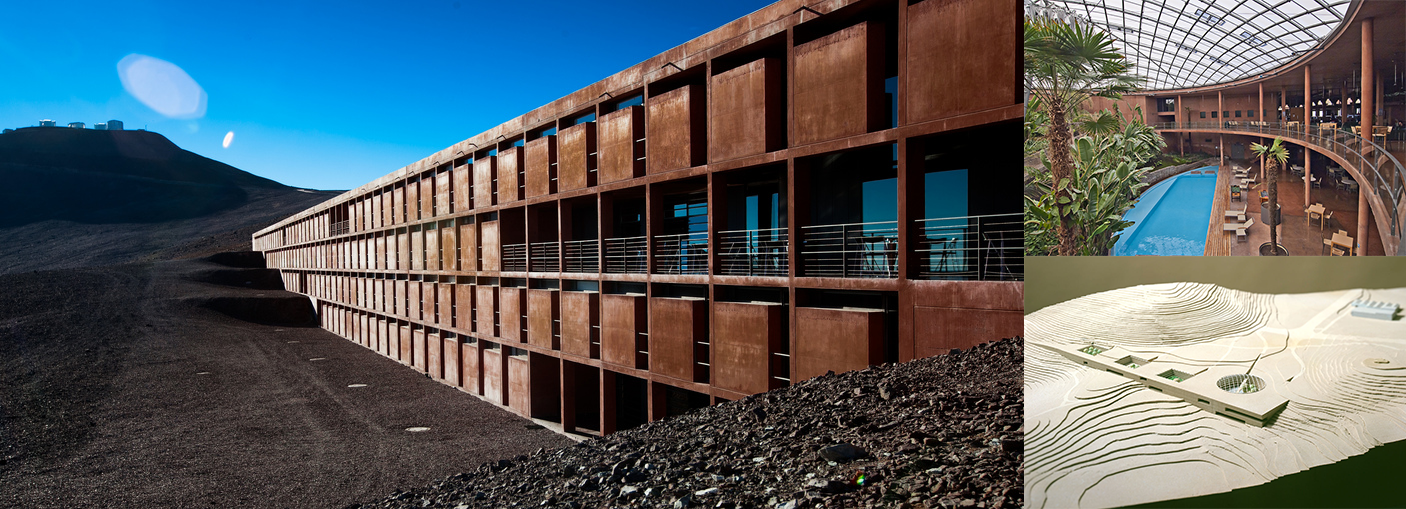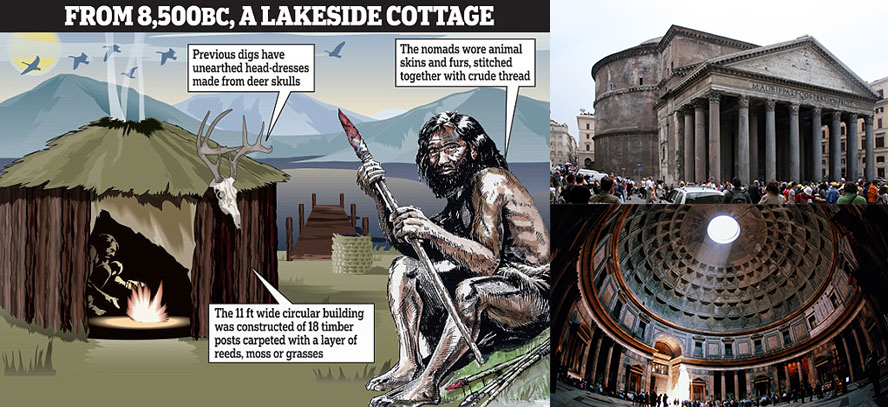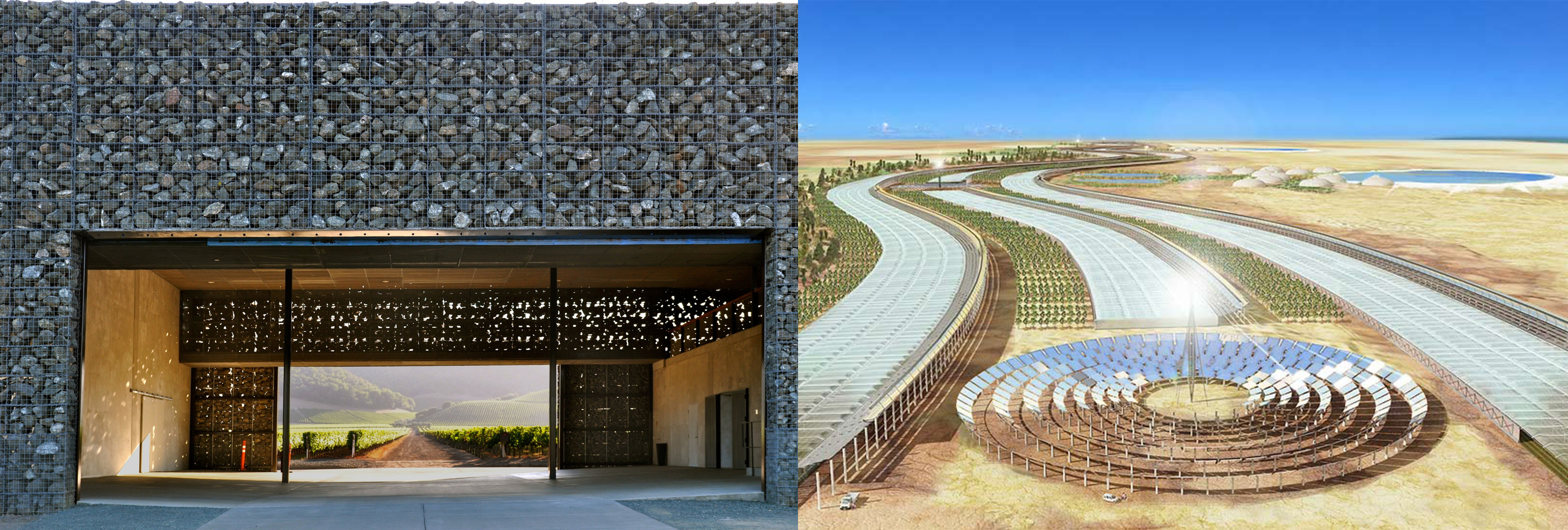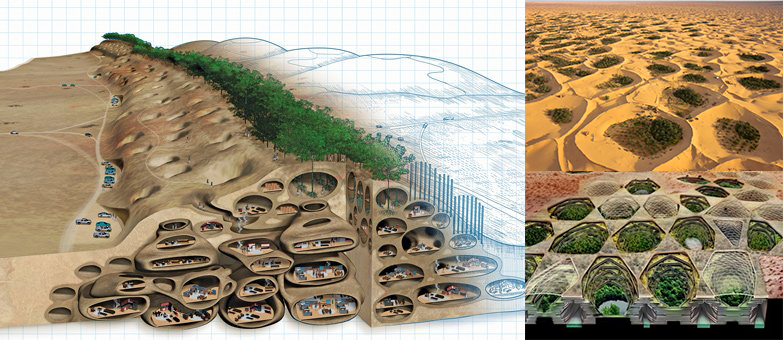Towards Weather-Architecture
|
The protection forest is made up of architectural above-ground “great walls” and underground “great walls”.
WHAT In order to make changes of exterior climate can be perceived strongly by buildings’ occupants. Then elements of weather should be able to affect architecture even mechanical system has met indoor comfort need. There are three elemental aspects of architecture——program, skin, atmosphere——and their relationship to weather providing us possibilities to inject instability of weather into a static architecture. Given this, I will choose the project according to: 1.The site has a number of different types of climate; 2.The project should allow indoor comfort level to change in allowable range; 3.Climate change play an important role in production and living conditions of residents; 4.The site should be available for some natural media like water, light and fog. The “blur building” was free of a conventional skin, relying on fog’s atmospheric depth for enclosure. As we erode the hermeticism of architecture, the atmospheric conditions of the exterior can penetrate our interior architectural atmospheres. The test case therefore is picked in farming-pastoral ecotone of Inner Mongolia which is the transition zone from semi-arid to arid areas. On the one hand, the district is rich of climate change. On the other hand, the area is extremely sensitive to climate variability and its function of maintaining ecological balance is fragile. Because of this, climate change not only has a direct and indirect impact on livelihood of farmers and herdsmen, but also affects the mode of their life. Renegotiating the relationship between architectural systems, interface, and weather is crucial in creating sustainable environments that simultaneously able to exploit the exterior climate while maintaining a protective enclosure. My thesis thus will take advantage of the characteristics of site and local lifestyle to exploit potential capacity of architecture acting a medium instead of a shelter between people and exterior climate, exploring a new kind of triadic relation. WHY In ancient times, humans built houses by using “branches and animal skins” to weave to enclose space, out of desire to adapt to nature and basic need for living space. With the original buildings coming into being, architectural surface was born. It shelters people from rain, wind, snow, fog, extreme temperature and the beast attack. Gradually people weren’t satisfied with the humble weaving means and began to dislike its thinness, hence the thickness of surface started to increase. Buildings throughout Middle Ages were hermetically sealed (as best as possible) from the elements of weather, effectively cutting off the outside world from the inside—architecture becoming the defining line of separation. In 19th century, new materials and new technology brought by the Industrial Revolution helped architectural surface develop dramatically. Steel, glass and concrete replaced stones and bricks. On the other hand, the frame structure made building skin get rid of the dependence on structure system. Getting greater freedom of the form, it was becoming the connection and transition between indoor and outdoor environment, and enclosed space began to break. Louis Sullivan proposed building appearance should be the expression of internal structure and function, “the form follows function”. Later, in the first half of the 20th century, Mies van der Rohe put forward the concept of “Skin and Bone” and Le Corbusier proposed “Five Points toward New Architecture” at the same time, which shows the concept of a free façade. This liberated architectural surface ideologically, making it completely separated from building structure. With glass and mechanical system prevailing in buildings, particular aspects of weather were allowed to permeate the interior of a building, namely sunlight, which enabled an emerging relationship (visual and light connection) to occur between the interior and exterior. In the 1990s, the appearance of the energy crisis made people aware of the problem of building consumption. Design and construction professionals have focused on tackling this issue. The architectural design which can be adaptive to the climate, uses natural lighting and ventilation is displacing hermetic architecture. Nowadays skin designing have two trends: one is ecology and technology, the other is material and human visual feeling. Charles Correa put forward “form follows climate” and Thomas Herzog, Sauerbruch Hutton and Herzog & De Meuron also focus on recyclable construction materials and eco-technology. For example, House Regensburg designed by T. Herzog makes use of solar energy. Dominus Winery designed by Herzog & De Meuron takes advantage of the heat absorption performance of stone and the thermal insulation property of glass. Entitled “smart material”, these skins are functionally adaptive through a change in their inherent properties—allowing building facades to respond to various weather conditions. Though such skins reduce a building’s environmental footprint, they don’t help architecture establish a new relationship between users and weather. My thesis tend to explore spatially a potential permeability of interface (building skin) to build the relationship which make exterior climate more perceptible to users. HOW Step 01 – The first step would be researching how the exterior climate affects the interior environment via the architectural skin, together with studying of how traditional and modern buildings use design methods, architectural materials and construction and technologies to reduce the detrimental effects and exploit the beneficial aspects of elements of weather; Bibliography 01: Theory: Bibliography 02: Techniques: Bibliography 03: Project:
|



